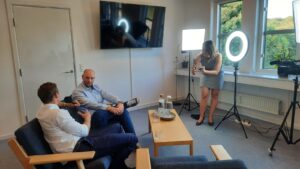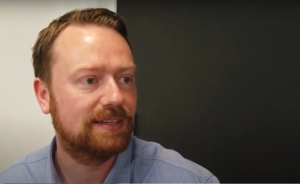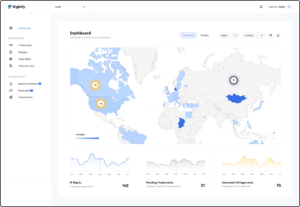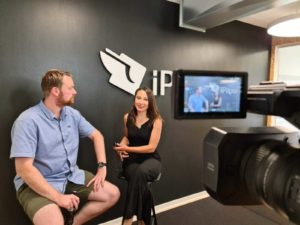The Digital Transformation Show [E2P1]: Drones, Denmark and Dronaar
The Digital Transformation Show: Drones, Denmark and Dronaar
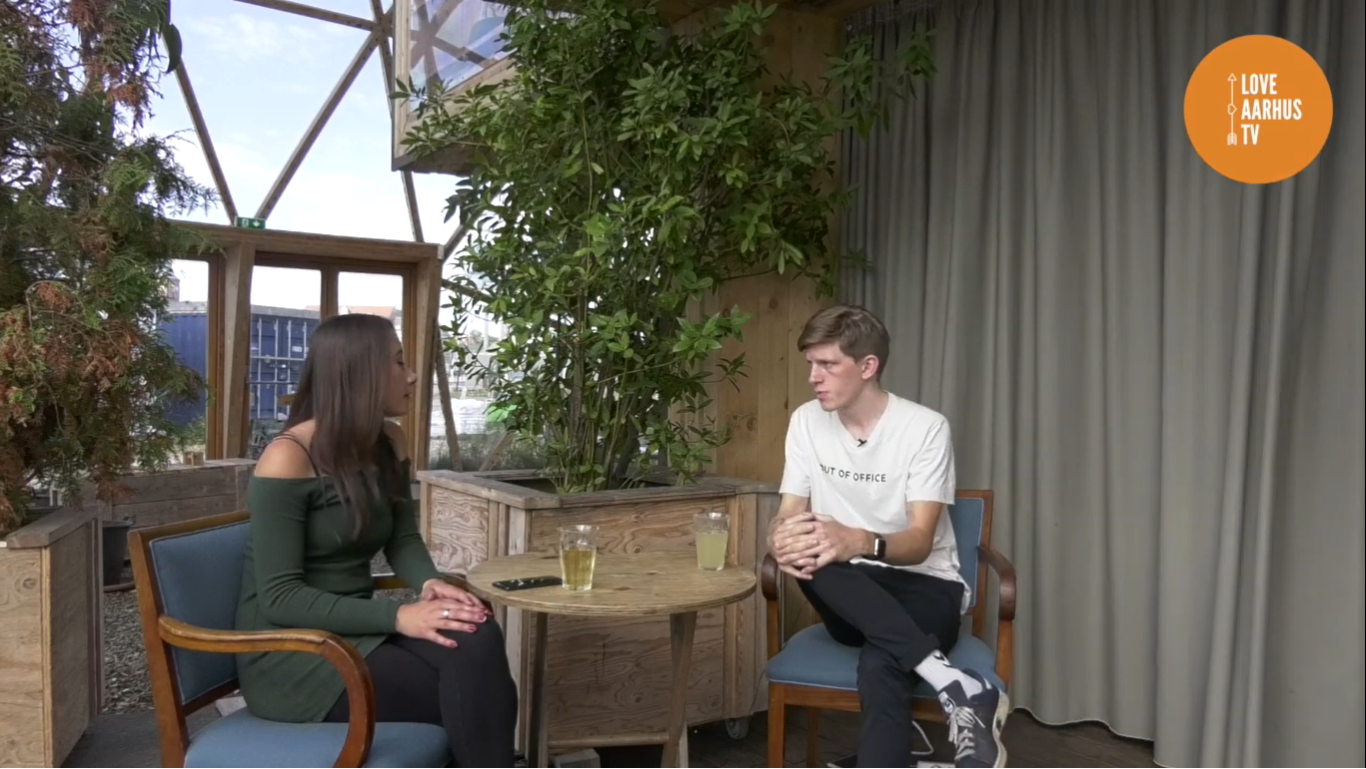
The Digital Transformation Show: Drones, Denmark and Dronaar
We had the pleasure to have Mikkel Fenneberg, co-founder and CEO at Dronaar visiting our beautiful set in Aarhus, the Dome of Visions. He shared with us his knowledge about the technology behind drones, its applications and the industries that are being disrupted by these “flying robots”. Watch the interview or read the full transcription below.
Estefanía: Welcome to the second episode of #TheDigitalTransformationShow, my name is Estefanía Zárate and today I have an amazing guest that studies here in Aarhus and is the CEO of a company called Dronaar. His name is Mikkel Fenneberg. Mikkel… thank you for joining us today!
Mikkel: Yeah, thank you too.
E: First of all… I really like the story behind the name of the company that you’re developing right now…
M: Yeah, it’s a funny story. We started off trying to brainstorm on what to call our company and I think it was at the beginning of this year and it was really hard, I think we worked on it for a week, but then we came up with spelling “drones” or “droner” with just two as like in Aarhus, because it’s a part of our company that we live here in Aarhus and we are based here in Aarhus and I means a lot to us to be a part of this amazing city… we talked about it a lot before as well, how the city has an ecosystem for startups like ours and, I won’t say that our company is depending on it but it’s really developing inside of it and we can really feel that so we wanted to make it a part of our name. Dronaar.
E: I guess that a lot of people in our audience are very much familiar with drones and what drones do or what they are for but I guess that some other people might not be that familiar with it. So, what is exactly a drone? It’s a robot, we can say that…
M: Yeah, you can say that.
E: It’s a flying robot, basically.
M: Basically, yeah. The drones typically have two computers onboard. It has a computer for controlling all the engines and the camera and so on, and it also has a computer to control all the sensors and maybe also the sensors that you put on to it additionally. So it really is a flying computer, a flying robot. When you think of a drone you think of a flying thing with these four propellers, they are quadcopters.
But drones really can also look like planes, this also known drones that we are using to take pictures for mapping, it’s fixed-wing drones. So you can get them in all shapes and sizes, you can get them with six propellers, eight propellers actually also for farming. So that’s the typical thing that you think when you think about drones, but drones can be used for, I won’t say everything, but you can use them for all crazy kinds of things.
E: So you have already mentioned one industry that is using drones that is agriculture and we are going to talk about many more industries that are also using the drones for automating or making some processes more productive, more effective. But I want to go back to the company right now and I want to know what’s the idea with Dronaar. What are you developing right now?
M: Right now we are trying to develop a digital platform that is going to connect certified pilots with customers all over Denmark and potentially in the future all over the world. A huge problem in the industry is that it’s really a niche industry, and it’s really niche because for around 20,000 dkk (2700 euros approximately) a person can get a license, they can get a drone and they can be ready to fly legally everywhere in Denmark.
For that money, you have both a license and a really good drone. So it’s really cheap to get it going so the drone market on the pilot side really developed and there’s a lot of pilots being certified and a lot of drones being sold and a lot of drones also being specially made for some kind of purpose. I know a guy who is cleaning houses for a living and he bought a drone and he mounted some kind of poison gun on the belly of it to remove bird eggs from the rooftops of buildings. He got that especially made. So it really became a niche market but the problem is that the market developed really much faster on the pilot side that it did on the customer side.
You said that a lot of the viewers hopefully know what a drone is but a lot of companies know what a drone is but they don’t know what they can use it for. So we have a lot of pilots but we do not have that many customers. When we ask the pilots in our own research what the biggest problem is for them to develop their business right now, a lot of them are saying that is missing demand. Our own research also shows that on average the Danish drone pilot only has four jobs a month and that’s not enough. We have a little over 5,000 drone pilots in Denmark right now and they are not getting enough jobs.
So we are trying to create this transparency in the market where customers can go onto our page, post a job, specified job for example in construction or whatever, and the pilots that have the specific requirements to solve this job for the customer will get a notice that says “hey, we found a job for you here, maybe you would like to bet on it”.
E: Like a freelancing, job-matching platform.
M: Exactly.
E: So what’s the current state of the company right now?
M: The current state of the company is that we are testing a lot on our NVP and our wireframes. We have only been going with this idea for six months so the development team has really been looking into how to make this platform as intuitive as possible and we have been talking with some potential customers, interviewing them about their problems and issues in the market so we additionally alongside with this development part have been doing a lot of research.
Also asking the pilots what their biggest needs and challenges are and trying to solve them with some new and innovative solution because this matching platform we would like to give the pilots some digital tools to solve the issues that they have. For example, with planning these jobs, getting the right permissions to fly inside of a no-fly zone.
E: Yes, we were talking about the main challenges of the drone industry and the main challenges of it most of the time have to do with legislation, for example.
M: Definitely. I mean the legislation in Denmark is tough, is really restrictive, and of course it is because drones are really a new media platform and of course it can be a little bit scary for people to have a drone hanging over them, flying around but since the drones came to Denmark around 10 years ago, in the form at least that we know today, there have only been three incidents where drones have actually fallen down and hit a person. When you compare that to a lot of other… just in the traffic, for example, how many accidents we have there every day, maybe you should look at trying to loosen up on these legislations or restrictions just to see what happens.
There is so much potential development in this business but right now the legislation is really putting an end to it already or stopping it in some way.
E: We were talking about all the possible applications of drones in several different industries and you mentioned to me some quite impressive examples of what people are trying to do with drones all over the world, for example, the shipping industry. Can you talk about some of those examples, please?
M: The transportation industry started with Amazon’s idea of transporting packages out to their customers with drones. I think a lot of people have heard about the idea right now but actually they are doing it in the UK right now. Their goal is to deliver packages to their customers within 30 minutes after the time that they place the order online and that is going to change the whole market, the way that we shop and the way that we go around buying things inside of the city. Why would people do that if they can have the package at their house in 30 minutes with a drone. So that’s where the thought of transporting things with drone started, I think.
In Denmark, they are starting testing flying cargo out to the ships on the west coast, making a corridor in the airspace out there to test that and they are also making a lot of tests on different kinds of really cool stuff. In Odense at Hans Christian Andersen airport, they reserved huge air space just for drone testing and that’s really amazing so it’s also really developing there right now.
E: So if I am correct, what they are trying to test is taking the drones all the way to the trailers and containers and lifting them up through the air to load the ship.
M: Yeah, I don’t know actually if it’s potentially the big containers but they can lift packages, quite big packages.
The biggest challenge is that right now it is not possible for pilots to fly beyond their visual line of sight. So they need to be able to look at the drone all the time. The drones can fly autonomously and a lot of people are flying them autonomously right now but they always have to be able to see the drone in the air and be able to stop it if it’s going to hit something. So right now it’s actually not possible to send a package from here out to another city, for example, I can’t do that because I can’t look all the way to there. So that’s one of the biggest challenges, I think, for the development of this business.
E: I really like the drone industry and I’m very happy that we are having this chat with you, who are pretty much an expert on the field, and I really like it for many reasons: one of them is that automation and robotics are some of the technologies that are completely disrupting a lot of industries right now. Especially drones because they are flying robots so it’s something completely new to our era and on the other hand, it’s allowing a lot of people to get a job with a very low amount of time or qualifications. You can get your license, I don’t know in Denmark how long does it take for you to get a license…
M: Three days.
E: Three days. So after three days, you’re a certified pilot and you can actually go out and start making money out of it. So this is also disrupting the employment in some sense. And then we also have some other applications of drones that have to do with, for example, delivering packages delivering medical supplies or pharmaceuticals into isolated areas so it’s also connecting the world in many other ways. So the challenges, we said, legislation but on the other hand, we have also the topic of what do people really know about drones. In general, what can you tell us about the current state of the industry itself. In the United States it’s pretty developed, I know, but how do we see it in the world?
M: It’s hard to say in the world because really we do not have that much data outside of the western world on the development of the business. We know that almost all of the technology comes from China, comes from a company over there called DJI, I think they have 75% of the market or something like that. But really we only have data on some of the European countries and then in the States.
And if we look at the States, the state of the market is that construction and farming especially are booming, really booming and we can see that. For example on a construction site, people are experiencing that drones give them an increase in the effectivity of 52%, that’s half the time, it’s crazy. And at the same time as making it at half the efforts, it is giving them 62% more accurate data insights. So you actually get a lot more precise data on half of the time. I think that explains a lot where the market is going because these numbers talk for themselves.
The problem with countries like Denmark compared to the States, I think is that the Danes are really nostalgic. When we talk to potential customers we know for a fact that they can really benefit from using these drones. They say like “well, we are using these lifts now, just putting a person up in the air instead and that’s working fine for us”. And that’s the biggest problem in the market right now, that we are just satisfied with status quo and I understand that is hard to adapt a new technology like this because it’s really different from what we know but when we look at the numbers, they just speak for themselves. It is really just contra intuitive not to adapt the technology if you ask me of course. But I can see how difficult it must be for companies, especially smaller companies to adapt this technology.
E: Yes, I would say this is a thing that most of the companies working with digital transformation have faced as a challenge because of course, disrupting a business takes precisely a will to actually disrupt it and change the status quo, so of course it’s a big challenge right there.
